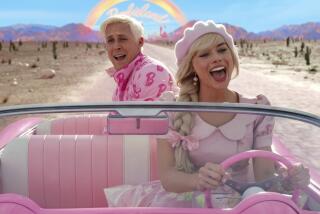THE BUSSING ISSUE
- Share via
I could not help but take notice of Evelyn Keyes’ article on the screen kiss, and David Kolpacoff’s subsequent letter taking issue with Keyes’ description of male and female head positioning during the early days of cinema osculation (“Ah, the Good Old Screen Kiss,” Jan. 19).
As author of “The Book of Kisses” (Dembner Books/W. W. Norton), I came across just about every kind of kiss imaginable during my 13 years of research. Kisses in films were indeed usually enacted with the man in a “superior” position, and the man was also frequently taller than the woman. However, I suspect that both actors’ heights as well as their osculatory positioning were far from accidental.
To give an idea of the rules of kissing etiquette that existed 50 years ago, a kissing guide published at the time said that unless the man is taller than the woman he kisses, “the kiss becomes only a ludicrous banality. Nothing can be more disappointing,” it insisted, than a kiss not enhanced by the appearance of male superiority.
Though I wouldn’t doubt that there are those who still subscribe to that philosophy today, it’s apparent that the last quarter century has seen the liberation of the screen kiss, placing man and woman in every (kissing) position imaginable. Furthermore, as the Hays Code fell out of use, concern over male/female neck-arching took a back-seat to more provocative details, such as extensive use of the tongue and the anatomical locale of the kiss (beyond the lips).
Of course, no matter how Hollywood chooses to set the example, Paul Fleming’s words will always hold true for the rest of us: “Only I and my sweet miss know the proper way to kiss.” (By the way, the smooching couple in “that 1896 short, ‘The Kiss’,” was John C. Rice and May Irwin. The 30-second production was, believe it or not, adapted from the stage.
DANNY BIEDERMAN
Reseda
More to Read
Sign up for our Book Club newsletter
Get the latest news, events and more from the Los Angeles Times Book Club, and help us get L.A. reading and talking.
You may occasionally receive promotional content from the Los Angeles Times.







